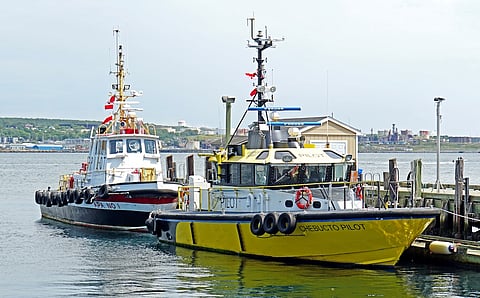

Canada is home to more than 540 ports. In 2017, ports and marine shipping carried almost CA$90 billion (17 per cent) of Canada's exports to world markets, and brought in CA$110 billion (21 per cent) of Canada's total imports by value.
Pilotage in the country is grouped under four federal Crown corporations – the Pacific Pilotage Authority (PPA), Great Lakes Pilotage Authority (GLPA), the Laurentian Pilotage Authority (LPA) and the Atlantic Pilotage Authority (APA), which are served by over 400 working marine pilots across Canada.
The Canadian Marine Pilots' Association was founded in 1966 to foster public awareness of the role of marine pilots in protecting public safety and the environment, and to work with other marine stakeholders to ensure a vibrant and healthy marine sector.
Baird Maritime spoke to Tristan K.-Laflamme, Executive Director and General Counsel, Canadian Marine Pilots' Association, about the current state of pilotage in the country and future trends in the sector.
How is business? Is the pilotage industry in your country strong or weak currently compared to history?
Demand for pilotage services closely mirrors macro-economic cycles and when the economy is expanding, as has been the case for the last decade, there tends to be more cargo shipped and, as a result, more and/or bigger ships. For example, there were over 10 per cent more pilotage assignments nationally in 2018 than in 2015, from 49,881 to 55,832.
Have there been any big changes to your country's port over the last year that have affected the pilotage industry?
Like pilotage, the business of Canadian ports reflects variations and patterns in the country's international trade. For example, over the last 20 years, Pacific coast ports have gradually taken more importance in terms of their relative proportion of the overall volume of cargo shipped at Canadian ports, as Canada's trade expanded with Asia.
These changes tend to happen over a long period of time and trends are not always immediately clear. There has not been one particular development over the last year that has been changing long-term trends, but every region can point to specific initiatives that could impact local traffic. For example, in February 2019, Canada's energy regulator approved the expansion of a pipeline that, if built, will result in more traffic on the west coast.
How many vessels have entered the fleet over approximately the last year?
None.
What do pilot boat operators in your country look for in particular when purchasing a new vessel?
Pilot boat operators (the four regional federal pilotage authorities) have to meet the requirements established in Transport Canada's Guidelines for the Construction and Inspection of Pilot Vessels.
Generally speaking, safety is of course the first consideration and operators will favour boats that will ensure safe pilot transfers in light of local conditions. These conditions can change significantly from region to region. For example, in the Laurentian Region, there will be ice cover for many months of the year whereas this will not be a factor on Canada's west coast.
What do pilot boat operators in your country look for in a designer and builder when purchasing a new vessel?
Unsurprisingly, operators look for value. Value does not mean necessarily the cheapest bid but the one that best meets an operators' specific needs (see below regarding specific local weather and operating conditions).
A vessel that will provide safe pilot transfers is the very first criterion, while longevity i.e., the useful lifespan of a vessel is also an important consideration, as is the type of service provided after any sale.
Are there geographical/weather conditions specific to certain areas that affect the design of new pilot boats?
As indicated above, winter conditions in the Laurentian Region are an important consideration and pilot boats must be able to function efficiently through ice and often extreme cold.
In the Atlantic Region, where pilot transfers often take place in waters that are exposed to the full rigour of the North Atlantic, pilot boats need to be able to safely operate and conduct transfers in important swells.
Winter conditions are also a reality in the Great Lakes Region, whereas transfers sometimes take place in open coastal waters on Canada's west coast. Just like with pilotage itself, local considerations are essential and no "single size fits all".
How do you see the short-term future of pilotage in your country?
The future of the Canadian pilotage business appears stable, assuming no sudden fluctuations in the world's global trade patterns.
Are the operators making or preparing to make any changes to their operations due to government/regulatory influences?
While responsibility for regulation-making is expected to be transferred to Transport Canada from the four regional federal pilotage authorities at some point over the next couple of years, as recent amendments made to the Pilotage Act are implemented, this development should have very little impact, if any, on operations.
